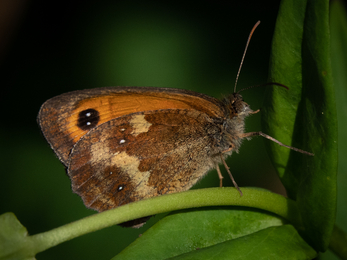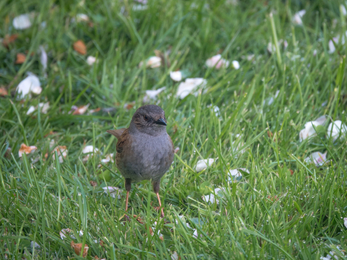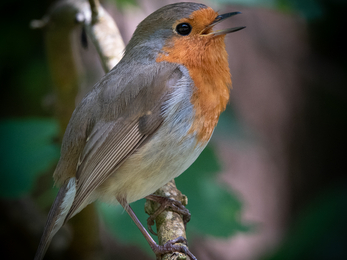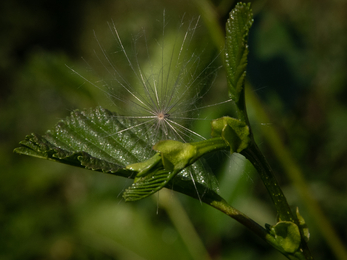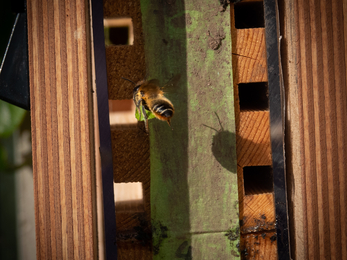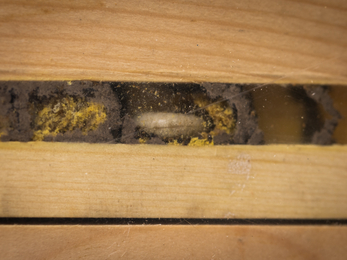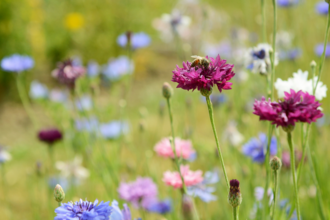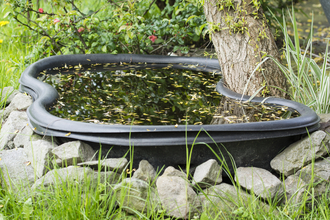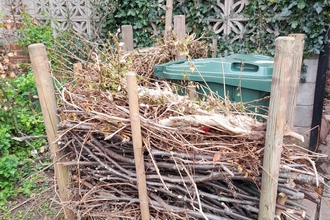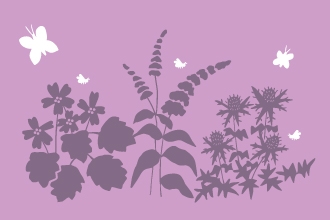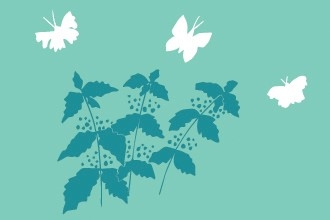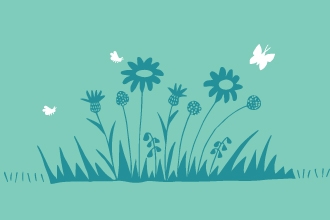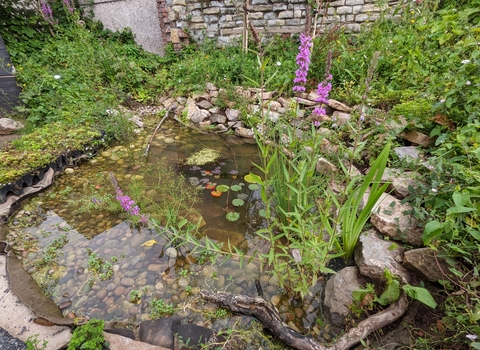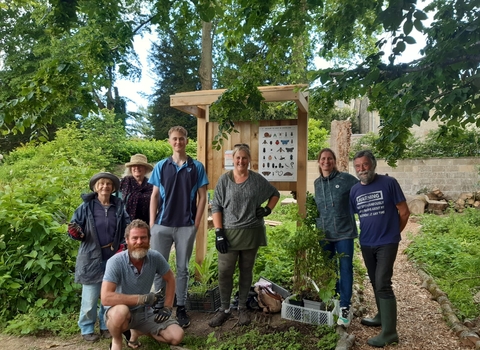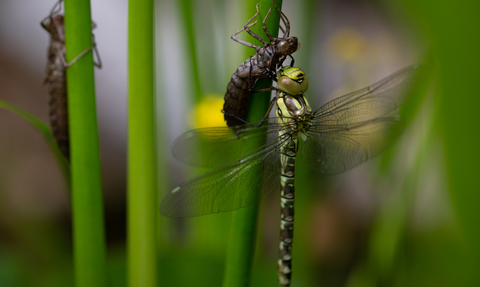
Stephanie Chadwick
A Passion for Wildlife Gardening & Photography in BS9
Stephanie's Rewilded Garden in Stoke Bishop
Stephanie Chadwick lives in Stoke Bishop, BS9 and has created a wildlife haven in her 100x30ft urban garden. Out of the 24 years she has lived here, 15 years of it her garden was a mud bath/football pitch for her children and pet dog! Now her children have grown up and left home, she has had more time to develop and combine her love for wildlife and photography, reaping the benefits the green space gives her.
We are all aware of climate change, but it seemed too big a problem to change myself. I was able to make wildlife adjustments to my small garden and saw the benefits quickly
Start with a Pond to Instantly Attract Wildlife
Stephanie began with planting more insect friendly plants and dug a pond, with the help of friends and neighbours. They dug out a 6x3ft pond during a rainy weekend in April in 2014 and had a pretty awful experience being covered in mud, digging in the torrential rain! However, it was worth it to see a fox the next morning drinking from the pond. Within 2 weeks, newts had moved in before they had added any pond plants, which made Stephanie very happy indeed. Native pond plants were then purchased and it took a year for the pond to properly establish.
ADVICE: When considering a pond, it is not difficult. The hard work was the initial digging, but after that the wildlife just comes and knows what to do! You can experience wildlife from just an old washing up bowl.
HOW TO: Create mini ponds & ponds
STEP BY STEP PICTURES:
Ponds: Good for Wildlife & our own Wellbeing
Frogs, newts, hoverflies and common blue and red damselflies were pond residents soon enough, as well as birds that love feeding near the pond. Dragonflies are also a common sight near the pond now – Broad-bodied chasers and Southern hawkers have been spotted.
It is an absolute miracle of nature, watching dragonflies emerge from nymphs into adulthood
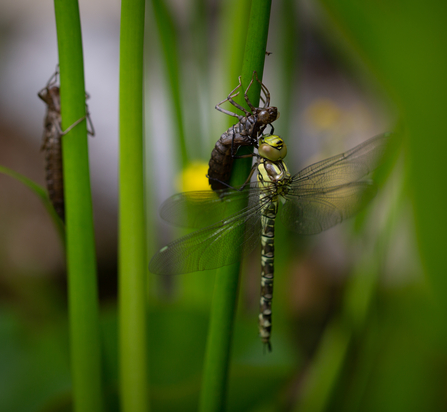
Stephanie Chadwick
Rewilding your Back Garden
Dandelion love – during lockdown, Stephanie’s garden was not cut due to no access to a lawn mower. She noticed many types of grass, clover and dandelions – which the bees loved! She saw the beauty in them rather than the reputation of being a ‘weed’.
Stephanie now leaves her grass to grow until August and watches out for ground nesting bees. In the shaded areas, bluebells, snake’s head fritillary and wild daffodil thrive and are beautiful.
TIP – Stephanie said that by digging up her turf, she has seen more wildflowers more quickly, due to less competition from the grass. Yellow Rattle also helps thin out the grass, also reducing gardening maintenance.
SLUG TIPS – Even though slugs are eaten by frogs, they can still cause issues in the garden. A good tip is to not grow what they love in the garden, Eg Dahlias, Echinacea and Delphiniums (which slugs love!) are grown in pots with ‘horticultural grit’ around the base to slow down and deter the slugs. You don’t need pesticides.
HOW TO: Create Mini Meadows
Stephanie shared her experience and advice about creating her pond at the Team Wilder Community Campfire: Spring event, see her talk below to hear from Stephanie herself.
Team Wilder Community Campfire: Spring, Stephanie
Garden is extremely good for mental health, it is meditative seeing what’s there and gently tending to garden tasks. “I take great pleasure sitting in the garden, watching damselflies dart about”.
Front Garden Love & Learnings
After the original privet hedge died off, mixed, native hedges were planted in to bring about more wildlife friendly habitats. In the hawthorn, a Hawthorn moth laid many eggs and covered the bush in caterpillars and ate a lot of leaves. No pesticides were used and nature found its way – the bush is still there!
Stephanie’s favourite plants for the front garden include lavender, cosmos, nigella and borage. All good for wildlife and they self-seed so do not need replacing!
Bee Hotels
After seeing this bee hotel on Springwatch, Stephanie invested in one. It was quite expensive and looked complicated, but worth it – you can see what the bees are doing inside, plus it comes with instructions to take out the inner section and harvest the bees to watch them hatch out. So quite a lot of effort and responsibility – but amazing to watch. It was from Nurturing Nature.
Plus many more bees have been attracted to the garden and they are amazing to watch, photograph, help and appreciate.
HOW TO: Learn about Bee Hotels
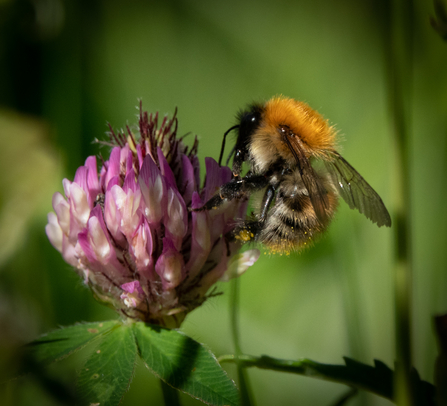
Stephanie Chadwick
Links to Local Spaces
Through wildlife gardening, Stephanie has added hedges to neighbour gardens, who also wildlife garden, in a bid to encourage hedgehogs. Between them they have seen Sparrow Hawks, Woodpeckers and King Fishers in their gardens! They also live close to Blaise Castle and open green spaces.
Westbury Wildlife Park Foundation is also nearly, where Stephanie has volunteered to help restore wildlife on the site. It is now used for nature-based activities for community groups and strives to preserve and protect local flora and fauna.
Take action & make a difference for nature
There are many ways to take action for nature, making space for local nature by creating habitats, like Stephanie has. It has brought great joy, especially when combining her love for wildlife gardening with her love and talent for photography.
- Ponds
- Use native hedges as barriers
- Wildlife gardening
- Bee hotels
- Grow a wild patch or mini meadow
- Transform your front garden
Share your pictures and advice about wildlife gardening.
This really is taking action for nature.
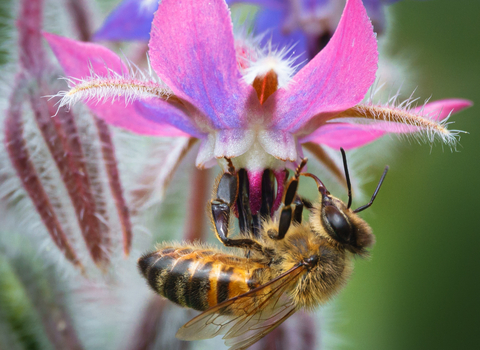
Stephanie Chadwick
Be part of Team Wilder
All actions for nature collectively add up and creates life for people and wildlife.
Share your actions for nature, like Stephanie, by sharing and tagging @avonwt on social media.
Like Stephanie's amazing bee picture shown here. Share the wildlife you see with others to raise awareness.
Log your actions for nature on the map




